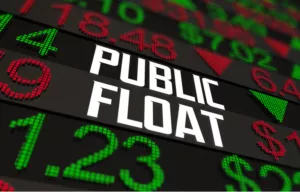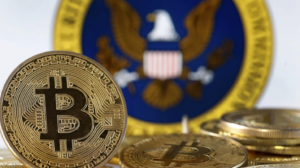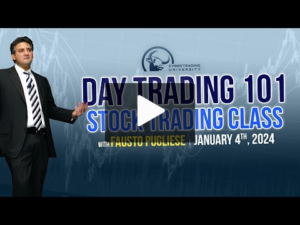
Investment applications such as Robinhood have been thriving by offering a quick and "free" way of investing in stocks. However this raises the question, how does a supposedly free service have a valuation of $7.6 billion after its most recent funding round? Let's dig deeper into how Robinhood makes their money and stays afloat as a trading app company.
What is Robinhood?
The Menlo Park, California based company Robinhood Markets Inc. is a U.S. based financial services company. Robinhood was co-founded by Vladimir Tenev and Baiju Bhatt in April of 2013 but the Robinhood app officially released to the public on iOS in March 2015.
Investors can trade stocks, options, ETF's and even 7 different cryptocurrencies on the Robinhood market.
Robinhood is a great platform for traders just starting that would like to invest in Options or blockchain cryptocurrencies. If you are looking to participate in day trading, FINRA requires you to have a minimum of $25,000 in your brokerage account to be considered a Pattern Day Trader. If the account drops below this $25,000 threshold, you will be limited to only three trades per every five days. This is commonly known as the Pattern Day Trader Rule or PDT rule. This was implemented by the SEC to protect retail traders with small accounts. The assumption is that a retail trader with over $25,000 has already accepted the risks that come with day trading.
The majority of the firm's customers are found to be in the millennial demographic. Investing can be expensive and Robinhood's mission was to create a platform where all people from different age brackets could trade. Hence, getting its name Robinhood right from the companies mission and the English folklore, "Robinhood", the outlaw who stole from the rich and gave to the poor.
Robinhood wants to democratize finance to everyone and their solution to this is offering a financial investment service to make trades commission-free to all its traders.
Robinhood's Commission-Free Investing
Whenever a service or product is offered to you for free, there is a 99.9% chance that there is a catch. This is because, in reality, nothing is free in our life. This includes investment apps such as Robinhood and Acorns, which offer commission-free investments whenever a customer makes a trade on their platform.
On top of that, executing a position will require a usual $5-$10 fee. That's because that's how a brokerage firm will traditionally earn its revenue.
But Robinhood doesn't require any extra capital fees from its customers. They are already making a ton of money off that concept because their customers are earning them capital by simply using their services. This is where the catch comes in and how Robinhood makes money off its customers.
Nevertheless, let's go into more detail on how the Robinhood services get their customer's money into their pockets.
How Robinhood Actually Makes Money
Taking into account how Robinhood doesn't earn revenue from traditional ways as most financial firms do and having millions of users on its platform. How does Robinhood make money? A company like Robinhood has a huge database and these costs add up, they have to make money. Here are some ways Robinhood makes money:
Interest from Idle cash
Robinhood will earn its revenue is through interest in investor's uninvested funds in their accounts. Similar to how banks collect interest on cash deposits. Robinhood earns its revenue this way by depositing uninvested cash into interest-bearing bank accounts.
With Robinhood's APY being 2.05%. If a user were to leave $200 uninvested in their account for 12 months, they would lose $4.10 in interest. This may sound like nothing but adding up to Robinhood's immense user base of 6 million. But the money adds up.
Selling user orders to market makers and trading venues
In a statement from 2018 by Tenev, he said Robinhood obtains approximately $0.00026 in rebates per dollar traded. Simply said, if a client bought stock worth up to $100, Robinhood would earn 2.6 cents from market makers. That may seem close to nothing. Although in a Bloomberg article from 2018, it's stated that Robinhood earns more than 40% of its revenue through rebates.
In a rebate of this scenario, a user would place an order to buy a stock. Robinhood sends the order to the market maker. Robinhood then pays a small fee to the firm to process the order,
On the Robinhood website, when a user buys or sells stocks and options through their brokerage account, that order will be sent to high-frequency trading firms for execution. Firms such as Citadel Securities and Virtu.
This also applies to cryptocurrencies through Robinhood Crypto, who will send the order to trading venues that allow you to receive competitive prices. Robinhood Crypto will then receive volume rebates from the trading venues much like the market makers.
Robinhood Gold (Premium Subscription)
Like most free applications in the market, Robinhood offers its premium subscription called Robinhood Gold.
The firm's premium service grants a better user experience while offering a free 30-day free trial for users to test out the service. Robinhood premium subscription users are entitled to bigger and instant deposits. Robinhood's free service takes approximately 2-3 days to verify.
Robinhood Gold users get access to Level II NASDAQ Market Data, margin investing and updated reports from independent investment research company Morningstar.
The premium subscription is only $5 every 30 days once you have completed the Robinhood 30-day free trial.
Margin Lending and Margin Interest
Robinhood Gold users with a minimum portfolio value of $2,000 have the opportunity to obtain loans from the firm itself. According to the Robinhood website, after the first $1,000 of borrowing, there will be an interest a user will pay at an annualized percentage rate of 5%.
This allows users to trade on margin. Trade on margin means that a user will borrow money that they will get to invest in the short term. But like any loan, it will be expected to be paid back and along with the growing interest. If a user decides to change their Robinhood account to another firm, there will be a $75 fee for the switch.
It is not recommended for a beginner trader to begin margin lending due to the massive risks and responsibilities.



